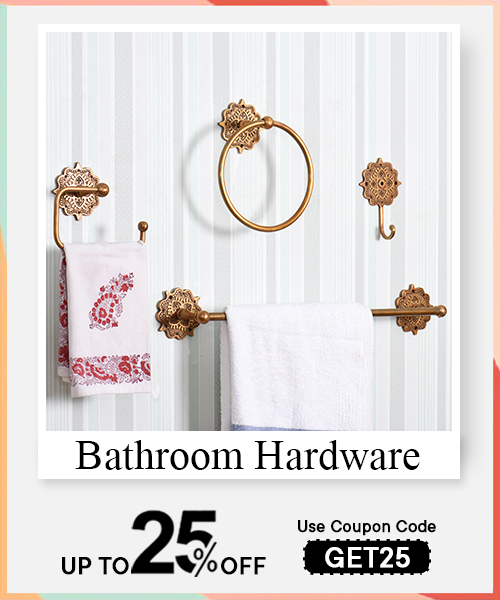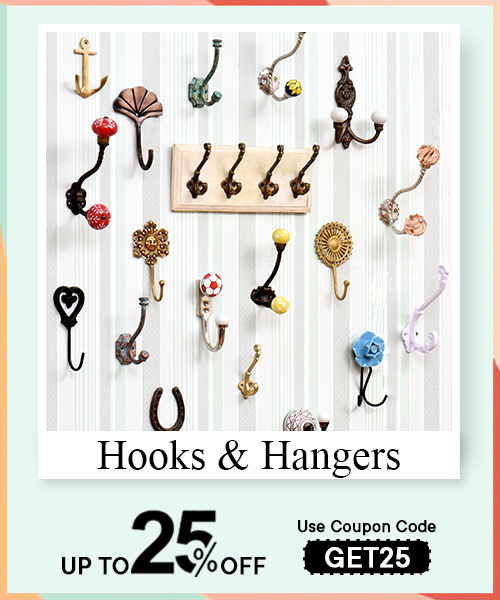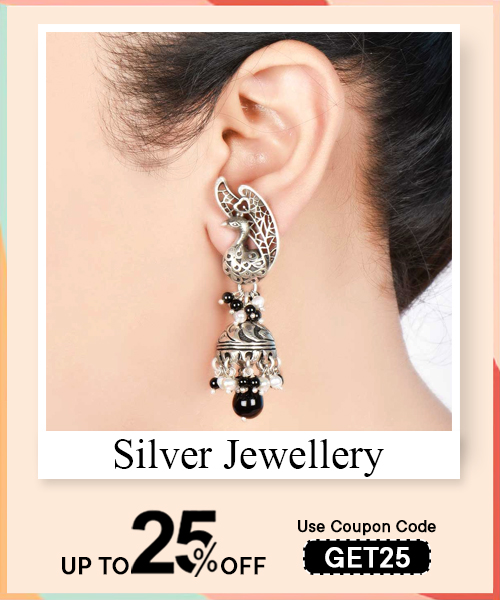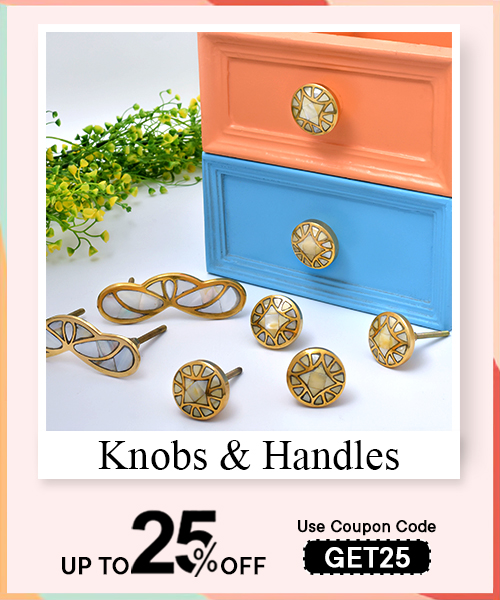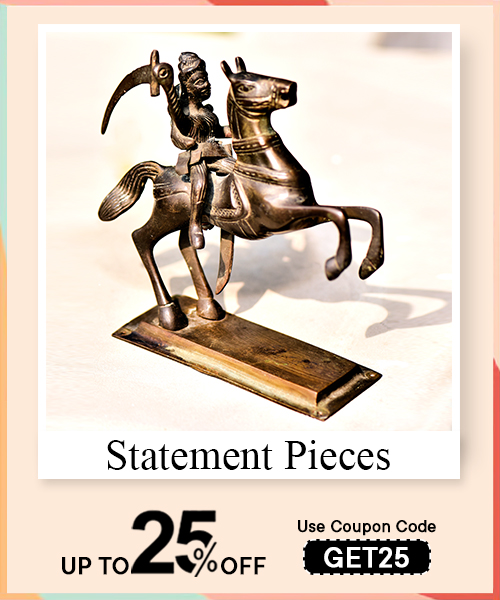Fashion jewelry isn’t just an accessory—it’s an attitude stitched into metal, beads, glass, and acrylic. It’s style unburdened by cost, an artistic expression that shifts with seasons and silhouettes. While fine jewelry whispers legacy, fashion jewelry shouts trend, texture, and accessibility. It flirts with the transient—meant to complement the now rather than endure the generations. Crafted from non-precious metals and imitation stones, its appeal lies in versatility, not value. This isn’t about eternal sparkle—it’s about ephemeral beauty. Think of it as your wardrobe’s punctuation mark, transforming mundane into memorable through layered aesthetics.
Fashion jewelry—often called costume jewelry—is crafted from affordable materials like base metals, rhinestones, beads, or acrylics. Its primary role is stylistic enhancement, not investment. Fine jewelry, on the other hand, uses precious metals (gold, platinum) and genuine gemstones, holding both monetary and heirloom value. The distinction lies in intent and material. Fine jewelry is timeless, often minimal and investment-heavy, carrying personal or cultural legacy. Fashion jewelry is expressive, fast-evolving, and created to pair with contemporary fashion. It offers room for experimentation—mixing textures, plating, and color palettes without permanence. While fine jewelry is about endurance, fashion jewelry is about storytelling in the moment—designed not to last forever but to say something meaningful right now.
Fashion is a narrative, and jewelry is its most tactile language. Investing in fashion jewelry equips you with a visual vocabulary to translate mood into motif. Whether you want to channel Parisian chic or bohemian spirit, fashion jewelry helps you build identity without permanence.
It’s also cost-effective. You can respond to seasonal trends or evolving aesthetics without draining your savings. It lets you curate micro-collections—color-specific, theme-specific, or occasion-centric—on a budget. And for creatives, it offers a medium to explore styling, layering, and juxtaposition.
Beyond aesthetics, there's emotional functionality. Wearing bold pieces can alter posture, boost confidence, and even become anchors in memory. A faux pearl choker from a street bazaar might hold more meaning than a diamond necklace locked in a vault. Investing in fashion jewelry is investing in the experience of dressing.
Read More : Ideas for Organising Your Fashion Accessories in Cute Small Chest of Drawers
Costume jewelry transforms everyday staples into styled statements. A monotone kurta becomes elevated with enamel earrings. A black turtleneck speaks sophistication when paired with a layered chain. It allows your wardrobe to be reborn through combinations.
This isn’t just about accessorizing—it’s about styling architecture. Jewelry divides space—neckline to shoulder, cuff to wrist—and gives visual anchors. It also creates themes: tribal, gothic, vintage, or futuristic, all achievable with simple swaps. And since it’s lightweight and budget-friendly, you can experiment freely. It plays well with contrast—pair wood with silk, glass with denim, resin with jute. It makes everyday dressing a process of curation, of dialogue between material and mood. In short, costume jewelry doesn’t fit into your wardrobe; it reshapes it from the inside out.
Jewelry is not merely an ornament; it's an archive of unspoken emotions, embedded aesthetics, and silent declarations. Identifying your personal jewelry style begins by listening—to your closet, your skin, your history. Are you drawn to structured geometry or the asymmetry of raw stones? Is your gaze arrested by antique finishes, or do contemporary silhouettes call louder? Your style is a loop of memory and mood—a brass ring from your mother’s shelf, a mirror-polished pendant echoing city lights, or rustic beads carrying the scent of the soil. With time, your jewelry becomes autobiographical—marking shifts in persona, pauses in taste, and peaks of self-expression.
Determining your jewelry aesthetic is a reflective process—part visual alignment, part emotional correspondence. Begin with observation: which materials, textures, or designs repeatedly draw you in? Pay attention to what you avoid. Does the cold polish of sterling silver appeal to your minimalism, or do earthy stones speak your interior language? Go deeper—jewelry aesthetics often stem from memory or cultural affinity. A filigree earring might remind you of your grandmother, while an oxidized cuff could channel your need for grounded expression. Try layering pieces you resonate with emotionally, then analyze what patterns emerge. Are they loud or whisper-soft? Intricate or bold? Note your lifestyle too. The balance between form and function refines the aesthetic. It’s not about trend; it’s about resonance. Aesthetic is not decided—it unfolds like a rhythm. The key is to allow intuition and lived experience to compose your visual symphony.
Lifestyle acts as the scaffold for your jewelry choices—it filters your selections through movement, setting, and necessity. A working professional may lean towards timeless minimalism: slender gold hoops, studded ear cuffs, stackable rings—pieces that breathe elegance without shouting. For a theater artist or someone from the creative realm, eclecticism often surfaces—statement necklaces, asymmetrical forms, textures that evoke a visual dialogue. Daily routines, commute patterns, and even climates influence the weight, material, and structure of chosen pieces. Lifestyle isn’t just about routine—it’s rhythm. Your jewelry should fit into the breath of your life, not interrupt it. Lightweight brass during monsoon, skin-friendly metals during humid summers, detachable layers for day-to-night transitions—each detail matters. Your jewelry must not only mirror your inner world but also move with your outer one. In that seamless fusion, style matures into identity.
Absolutely—fashion jewelry, more than fine jewelry, often serves as a clearer mirror to personality. It carries the freedom of impermanence, allowing the wearer to experiment without the constraint of value. A bold, chunky necklace may indicate assertiveness or a flair for drama. A delicate chain with an abstract pendant might suggest introspection, quiet confidence. The choice of material—wood, glass, metal, ceramic—adds another psychological texture. Does one lean toward symmetry or prefer controlled chaos? Do they layer with abandon or curate sparingly? All of this reflects identity in motion. Fashion jewelry thrives on mood swings and shifting phases, much like personality itself. It adapts and evolves. One day, you’re vintage baroque; the next, tribal minimalist. Your collection becomes a personal archive—not just of looks, but of emotional states. Each piece says something about how you wish to be seen—and, sometimes, how you wish to see yourself.

In the shifting seasons of fashion, timeless jewelry holds a quiet, enduring presence. These are not just adornments but heirlooms in the making—pieces that whisper identity, elegance, and permanence. Versatility is not rooted in trend, but in utility, grace, and relevance across wardrobes. A well-chosen piece transcends moments, styling seamlessly with cotton kurtas or linen shirts, formal suits or breezy sarees. The emotional weight, historical echoes, and detailing—oxidized textures, minimal enamel work, brushed metal—define longevity. Choose shapes that speak balance, metals that age gracefully, and designs that linger longer than hashtags or fast-fashion fads. Let them speak without shouting.
Wardrobe staples in jewelry are defined not by season but by story—designs that move through decades without becoming dated. Stud earrings, minimalist hoops, a slim chain with a pendant, and a well-crafted bangle serve as foundational pieces. For Indian silhouettes, oxidized jhumkas or a bold silver kada pair beautifully with ethnic or indo-western attire. Internationally, a classic signet ring or tennis bracelet delivers universal flair. These staples are versatile, often neutral in tone, with restrained embellishment and excellent craftsmanship. What makes them essential is their ability to elevate casual looks and anchor formal wear without overpowering. A staple carries the weight of repetition—it looks as polished on its hundredth wear as it did on the first.
Balance emerges from layering—styling trend-led pieces atop timeless canvases. Think of a delicate gold chain adorned with a season’s charm over a basic coin pendant. Or stacking sleek, geometric rings beside a vintage band. It’s not about choosing sides, but about marrying contrast. Keep your base minimal: a classic choker or studs. Then introduce trend-driven accents—chunky chain links, asymmetrical earrings, or enamel-drenched motifs. The key is restraint; let trend pieces be accents, not anchors. Reuse older classics as foils to newer silhouettes. Like fabric and cut in fashion, finish and form in jewelry can dance together—so long as the rhythm doesn’t break the aesthetic continuum.
Certain metals hold an ageless glow. Gold—particularly 14k and 18k in matte or satin finish—remains eternal. Silver, especially when oxidized or brushed, wears time like an ornament. Rose gold had its trend peak but continues in softer palettes. Brass, when sealed, adds raw earthiness, perfect for artisanal appeal. Rhodium-plated pieces lend shine and anti-tarnish resilience. As for finishes: hammered textures, satin sheens, and sandblasted mattes never lose relevance. These finishes work well across boho, contemporary, and traditional pieces. Metals that patina gracefully—like copper and brass—tell a visual story with wear, which adds to their charm. Style evolves, but metal's essence stays tactile, grounded, and honest.
In the realm of fashion jewelry, impact isn’t always about grandeur—it’s about curation. Mixing and matching invites story-building through contrast, tension, and rhythm. Whether it’s pairing muted tones with metallics or juxtaposing vintage with modern edges, the key lies in intentional asymmetry. Consider texture: a hammered brass bangle against a velvet choker, or sleek chains playing against ceramic beads. The conversation between pieces should whisper, not scream. It’s the interplay of structure and spontaneity that creates resonance—where chaos finds choreography, and each piece becomes a sentence in a poetic ensemble. Let each layer carry its own cadence.
Effective layering is an act of architecture—balancing scale, weight, and negative space. Start with a base: a simple, close-to-skin chain sets the anchor. Add mid-length pendants or lockets that create focal movement, then complete the silhouette with a long, textured strand. Vary thickness, play with pendant shapes, and leave intentional gaps for the skin to breathe through. For bracelets, alternate rigidity and fluidity—a cuff next to beaded strings, or bangles between chains. Symmetry isn’t mandatory, but proportion is crucial. Too many dominant pieces create visual conflict; the eye needs hierarchy. Think rhythm over repetition, dialogue over noise. The aim is cohesion—not uniformity—where each layer respects the next.
The secret lies in understanding finish, warmth, and intent. Gold, with its warm luster, complements copper and brass. Silver’s cooler tone aligns beautifully with pearls, oxidized elements, or blackened alloys. Matte surfaces ground the high-gloss brilliance of polished metals. When introducing fabric, bone, shell, or resin—contrast becomes your co-pilot. Think of it like styling in cinema: lighting, mood, and subtext all matter. Your jewelry ensemble should evoke continuity—an emotional logic. For example, pairing a gunmetal ring with a gold cuff might seem jarring unless bridged by a multimetal chain or neutral gemstone. Layer pieces that speak in different dialects but tell the same story. Cohesion, not matchiness.
Over-accessorizing stems not from volume, but from lack of intention. Ask what you want the accessories to do—accentuate neckline, echo a fabric detail, balance silhouette? Let your focal point guide your restraint. If the earrings are statement, let the neck breathe. If hands carry stories through rings and bangles, keep your neckline soft. Avoid duplicating motifs—geometric on ears, florals on wrists, and tribal on neck? That's visual dissonance. Also, let mood inform quantity—daylight allows more freedom; dusk demands precision. Think of accessories as punctuation, not decoration. Every mark must serve rhythm and pause—never just adornment for adornment’s sake.
Read More : Jewelry Storage Ideas You Will Want to Use
When sourcing quality fashion jewelry, consider it more than a transaction—it’s a curatorial choice. You're not just picking pieces; you're selecting visual metaphors for identity. Begin with tactile cues: smooth finishes, secure closures, weight balance, and seamless joints. Good jewelry speaks through construction. A well-made piece has continuity—links should move fluidly, stones should be set flush, and clasps should feel sturdy. Materials matter: even fashion jewelry should avoid nickel and opt for stainless steel, brass, or sterling overlays. Prioritize artisanship—look for design depth, handcrafted elements, or intentional asymmetries that show character. Choose pieces that age with elegance.
Signs of well-crafted fashion jewelry are embedded in its details—think of it as scriptwriting with metal and stones. Begin with the finish: quality plating (gold, rhodium) should feel even, not patchy or overly shiny. Joints must not creak, twist, or warp. Clasps should snap shut confidently, not dangle or slip. Stones, if any, should be bezel or prong set without glue marks; resin or plastic stones should appear vibrant, not cloudy. Check for uniformity in shape and polish—each piece should mirror precision, not mass-produced monotony. Engravings, logos, or brand markers must be etched, not printed. Subtle weight is key: too light feels cheap, too heavy disrupts comfort. A consistent design language—where the hook matches the motif—also reflects care. Lastly, skin reactions are red flags. True quality resists tarnish, maintains its form, and grows in texture with time.
Yes, and navigating them requires a collector’s discernment. Offline, boutique pop-ups, artisanal markets, and curated exhibitions often feature handpicked, limited-run collections from emerging designers. Spaces like Dastkar Haats, concept stores, or independent fashion houses blend tradition with modernity. Online, platforms like IndianShelf, Etsy (for handmade), Ajio Luxe, Nykaa Fashion, or independent brand websites such as The Slow Studio, Quirksmith, and Outhouse offer quality in transparency. Evaluate how a brand presents its process—materials used, styling contexts, behind-the-scenes footage, or sourcing stories. Look for well-photographed products with 360-degree views, detailed descriptions, and certifications when applicable. Avoid websites that over-filter images or avoid zoom features. Trust brands that welcome returns—confidence in product quality often shows in their policies. If a store connects story, style, and service without flashy distractions, it’s a mark of reliability.
Evaluating brand reputation begins with narrative consistency. A credible brand has a cohesive aesthetic, tone, and intent—whether bold maximalism or minimal elegance. Dive into its origin story: who founded it, why, and how it evolved. That intention often echoes in the product. Review-wise, go beyond ratings—scan for language that speaks of long-term wear, skin safety, and real-life utility. Compare feedback across platforms—social media comments, customer photos, and unboxing videos on YouTube offer the raw truth. Beware of overly generic praise or repeated templates—these often indicate paid reviews. Check how the brand responds to criticism: professionalism in replies, refund offers, and resolution speed reveal more than glossy product pages. Finally, engage the community—discussion forums like Reddit, jewelry subcultures, or even Instagram stories tagged with the brand name yield authentic chatter. In essence, a reputable jewelry brand doesn't just sell shine—it sustains trust over trends.
Jewelry isn’t just an accessory—it holds memory, intention, and sometimes, a quiet sense of ritual. Proper maintenance isn’t a task; it’s a practice of respect. Dust, moisture, and air are silent enemies, dulling shimmer and weakening links over time. Fashion jewelry, being plated or alloyed, demands extra consciousness. Using a soft cloth for regular dry wiping restores its surface luster without aggressive abrasion. For storage, wrapping each piece in anti-tarnish paper or soft muslin keeps oxidation at bay. Store them in individual compartments or pouches to avoid tangling or scratching. The goal isn’t just preservation—but prolonging their story.
Fashion jewelry, unlike fine metals, is often layered with gold polish, imitation stones, or acrylic work—making it more sensitive to harsh cleansers. The best practice is restraint. Avoid soaking or using sonic cleaners. Instead, wipe each piece with a clean microfiber cloth after use, especially after long wear, to remove oil and sweat buildup. For deeper cleaning, a few drops of mild dish soap diluted in warm water can be applied using a soft-bristle brush—gently and minimally. Avoid submerging completely. Dry the piece with care, patting it softly rather than rubbing. Most importantly, always keep perfumes, sprays, and creams away; apply them well before putting on your jewelry. Every piece holds a surface memory, and these gentle routines ensure that luster lives longer without sacrificing its integrity.
Storing jewelry is an art of separation and softness. Never toss multiple pieces into one box—that’s an invitation to scratches, chain knots, and chipped stones. Each piece—whether a necklace, bangle, or earring—deserves its own cradle. Velvet-lined boxes, anti-tarnish strips, cotton pouches, or even handcrafted wooden organizers can maintain form, minimize air contact, and reduce chemical reactions. Avoid humid spots—bathrooms are the worst offenders. A cool, dry drawer away from direct sunlight works best. Hooks for necklaces, padded trays for rings, and transparent labeled cases for small pieces bring both visibility and protection. Think of it like curating a wearable archive—each piece, preserved in its own frame, ready to retell a story.
Some materials are fragile in appearance, others in chemistry. Gold-plated items are most vulnerable to skin oils and friction, wearing down to base metal quickly if not handled gently. Faux pearls can lose their coating with sweat or acidic environments. Glass-based embellishments crack with sudden temperature shifts. Resin and enamel are prone to scratches. Wooden or thread-based jewelry can warp or fade in humidity. Silver oxidizes rapidly and needs anti-tarnish solutions or airtight containers. Mirror-finished or oxidized jewelry should never be polished abrasively—it ruins their intended texture. The thumb rule? Treat imitation like heirloom and every element—be it soft metal, glass, or clay—like it carries soul.
Fashion jewelry, though often seen as secondary to fine pieces, plays a vital role in personal styling—offering versatility, affordability, and expression. Budgeting isn’t just financial; it’s also aesthetic foresight. One must plan not only by cost but by mood, outfit compatibility, and long-term relevance. This process is like curating a wardrobe—each piece a note in the larger melody of your personal style. Set a monthly or seasonal budget, prioritizing essentials like gold-toned studs or oxidized statement rings, followed by experimental, trend-based buys. Think of it as planting seeds that bloom over time—timeless classics entwined with evolving accents. That way, your collection tells a story, not just a shopping list.
The value of fashion jewelry lies in its ability to elevate everyday styling without the burden of luxury pricing. Yet, spending depends on intention. For daily wear pieces—minimalist studs, simple cuffs, subtle pendants—allocating 10–15% of your monthly style budget ensures a smart mix of utility and elegance. Occasion-based or statement pieces demand more investment, but not necessarily more money—rather, more thought. It's wiser to buy less but better: high-quality finishes, hypoallergenic materials, or handcrafted details. Price should reflect potential wear, versatility, and emotional resonance, not just trendiness. Overindulgence leads to clutter, not style. Meaningful moderation, layered with consistency, gives your collection shape.
Styling is rarely linear. Sets offer cohesion—ideal for events, traditional looks, or when time is short. But separate pieces invite creativity, encouraging personal stories to unfold through contrast. The trick is in knowing your intention. Are you building a look, or building an identity? A set may look harmonious, but it risks uniformity. Separates allow for repetition with reinvention—an oxidized ring worn one day with bangles, another day solo with linen shirts. The ideal approach is hybrid: collect a few elegant sets, then slowly deconstruct them, mixing with textured, standalone pieces. In style, dissonance often creates the most harmonious melody.
Read More : How to Wear and Style Statement Earrings?
A jewelry collection, like a memory lane, is best built patiently. Start with functional cornerstones: neutral studs, layered chains, a classic cocktail ring. Avoid impulse buying—opt instead for thematic intent. Build around silhouettes (boho, vintage, minimal), metals (brass, silver, enamel), or moods (festive, formal, casual). Document your purchases. Keep mood boards. Style, unstyle, and restyle. Rotate pieces by season and tone. Prioritize longevity over novelty—invest in handmade, recycled, or artisanal picks. Let travel, stories, and moods influence choices. The goal isn’t quantity but resonance. A curated collection reflects who you are becoming—not who you were chasing in a trend reel.










